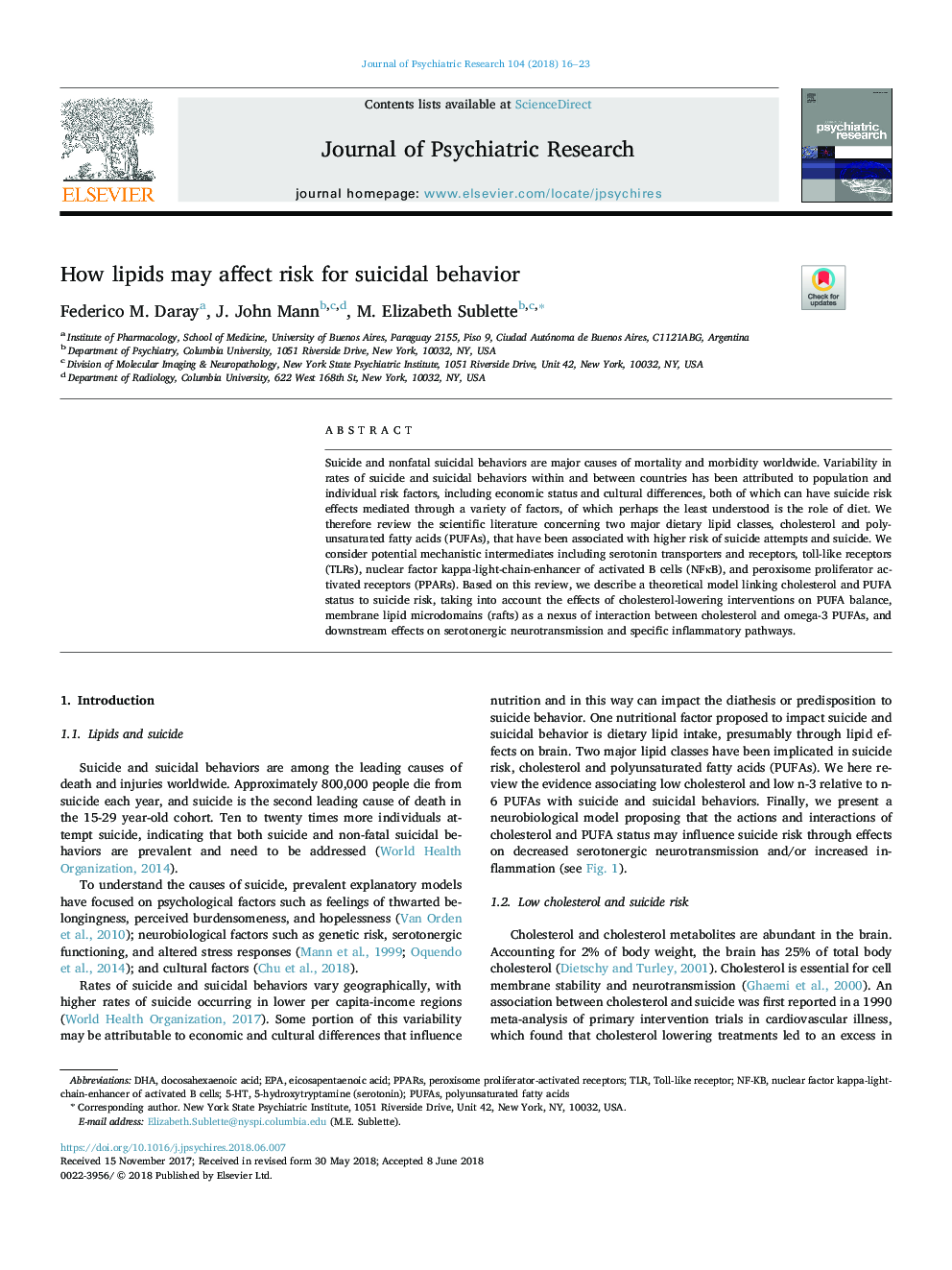| Article ID | Journal | Published Year | Pages | File Type |
|---|---|---|---|---|
| 6799366 | Journal of Psychiatric Research | 2018 | 8 Pages |
Abstract
Suicide and nonfatal suicidal behaviors are major causes of mortality and morbidity worldwide. Variability in rates of suicide and suicidal behaviors within and between countries has been attributed to population and individual risk factors, including economic status and cultural differences, both of which can have suicide risk effects mediated through a variety of factors, of which perhaps the least understood is the role of diet. We therefore review the scientific literature concerning two major dietary lipid classes, cholesterol and polyunsaturated fatty acids (PUFAs), that have been associated with higher risk of suicide attempts and suicide. We consider potential mechanistic intermediates including serotonin transporters and receptors, toll-like receptors (TLRs), nuclear factor kappa-light-chain-enhancer of activated B cells (NFκB), and peroxisome proliferator activated receptors (PPARs). Based on this review, we describe a theoretical model linking cholesterol and PUFA status to suicide risk, taking into account the effects of cholesterol-lowering interventions on PUFA balance, membrane lipid microdomains (rafts) as a nexus of interaction between cholesterol and omega-3 PUFAs, and downstream effects on serotonergic neurotransmission and specific inflammatory pathways.
Keywords
Related Topics
Life Sciences
Neuroscience
Biological Psychiatry
Authors
Federico M. Daray, J. John Mann, M. Elizabeth Sublette,
